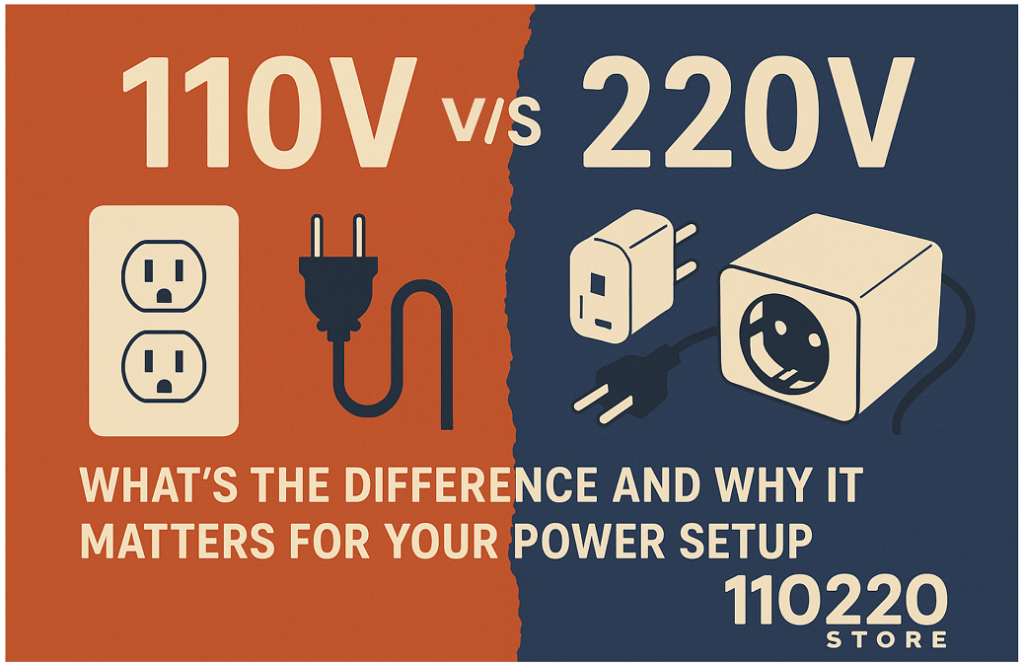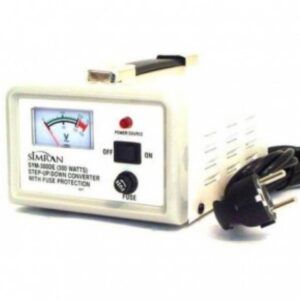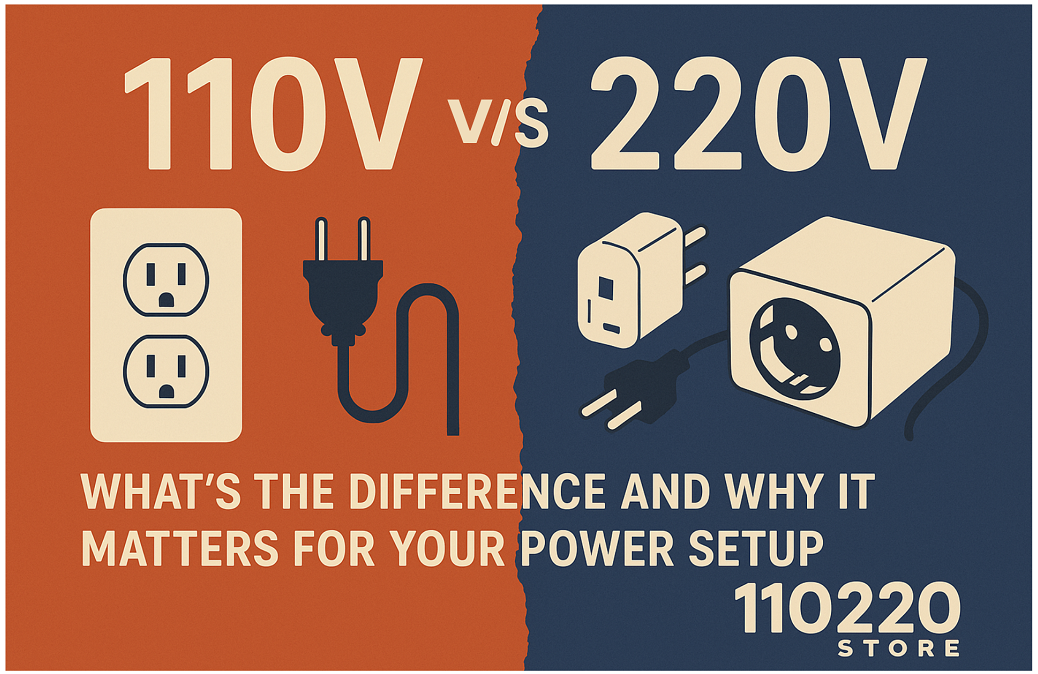Subtotal: $83.15
110V vs 220V: What’s the Difference and Why It Matters for Your Power Setup
110V vs 220V: What’s the Difference and Why It Matters for Your Power Setup
Knowing the difference between 110V and 220V power systems is essential when installing electronics and appliances in your house or place of business. Understanding how voltage affects your devices can save you time, money, and avoid major electrical hazards, whether you’re an electrician, world traveler, or someone simply setting up a new workspace. No matter where you are, 110220 Store specializes in offering premium voltage converters, power cords, and adapters to ensure a seamless and safe power setup.

Why Does Voltage Matter and What Is It?
Electric potential energy is measured by voltage. Consider it analogous to a hose’s water pressure. More potential energy to transfer electricity through a system is indicated by higher voltage. The majority of homes in North America use 110V to 120V, whereas many nations in Europe, Asia, and Africa use 220V to 240V.
Devices designed for one area might not function correctly—or safely—in another without the necessary equipment due to the disparity in voltage standards across the globe. Tools like voltage converters, adapters, and specialty power cords are useful in this situation.
Important Distinctions Between 220V and 110V Systems
- Power Output: Heavy-duty appliances like dryers, ovens, and air conditioners are best suited for 220V devices since they can usually deliver more power than 110V systems.
- Plug Types: Plug configurations frequently vary depending on the voltage. For this reason, when using electronics overseas, visitors from other countries require plug adapters.
- Safety: Because lower voltage (110V) systems carry less current, there is a lower chance of electrical shock, making them generally regarded as safer. However, when used properly, both systems are safe due to proper installation and circuit protection.
- Efficiency: When it comes to powering large devices and sending electricity over long distances, high-voltage systems may be more effective.
- Availability: Without specialized installation, 110V outlets may be hard to find in nations where 220V is the standard. The opposite is also true.
Global voltage standards have been divided for a long time. Due to its compatibility with early lighting systems, North America adopted the 110V system early on, while European countries later chose the 220V system for cost and efficiency reasons. Switching became unfeasible once infrastructure was constructed around these standards.
These disparate standards are simply a reality of modern life. However, if you have the proper equipment, they don’t have to be a hassle.
Selecting the Proper Tools: Voltage Converters, Power Cords, and Adapters
Knowing what equipment you need is essential when working across voltage systems. Our products at the 110220 Store can be helpful in the following ways:
- Adapters: These are necessary to fit plugs into sockets of various shapes. Keep in mind that adapters don’t change voltage.
- Voltage Converters: When converting 110V to 220V or the other way around, these are essential. For electronics that don’t support dual voltage, they are particularly crucial.
- Power Cords: The safe and effective flow of electricity is guaranteed by the proper power cord. We have cords that work with both 110V and 220V systems.
Dual Voltage Devices: A Convenient Fix
Certain contemporary devices, particularly laptops and smartphones, are designed to automatically manage both 110V and 220V. Always read the label on the power adapter for your device. If it says something like “Input: 100-240V,” then all you need is an adapter.
Using the incorrect voltage without a converter, however, can harm single-voltage devices and present a safety risk.
Actual Situations
- Traveling Abroad: You want to use your hair dryer while you’re in Europe from the United States. You’ll need a voltage converter in addition to an adapter if it’s not dual voltage.
- Importing Appliances: You purchased a Japanese rice cooker, which is typically 100V, and wish to use it in Europe (220V) or the United States (110V). It cannot be operated safely without a converter.
- Business Setup: Opening a branch abroad? Voltage mixing can lead to confusion and damage to equipment. Allow 110220 Store to assist you with a customized power solution.
Why Pick the 110220 Store?
We are your power compatibility specialists, not just a store. Our carefully chosen range of power cords, adapters, and voltage converters guarantees that you will find precisely what you require for your particular configuration. Additionally, our skilled support staff can help you with any complicated power configuration.
We have the resources and know-how to ensure your equipment operates safely and smoothly, whether you’re importing electronics, traveling the world, or setting up an office.
Final Thoughts
Knowing the difference between 110V and 220V is essential for safe and effective power use; it’s not just a technical detail. You can easily bridge the gap between international standards with the correct voltage converters, power cords, and adapters.
Our goal at 110220 Store is to make power transitions simple for you. Be cautious, shop wisely, and take charge with assurance.

 Simran SYM1000, 1000 Watt Step Up & Down Voltage Converter Transformer with Meter 110-220 volts
Simran SYM1000, 1000 Watt Step Up & Down Voltage Converter Transformer with Meter 110-220 volts 